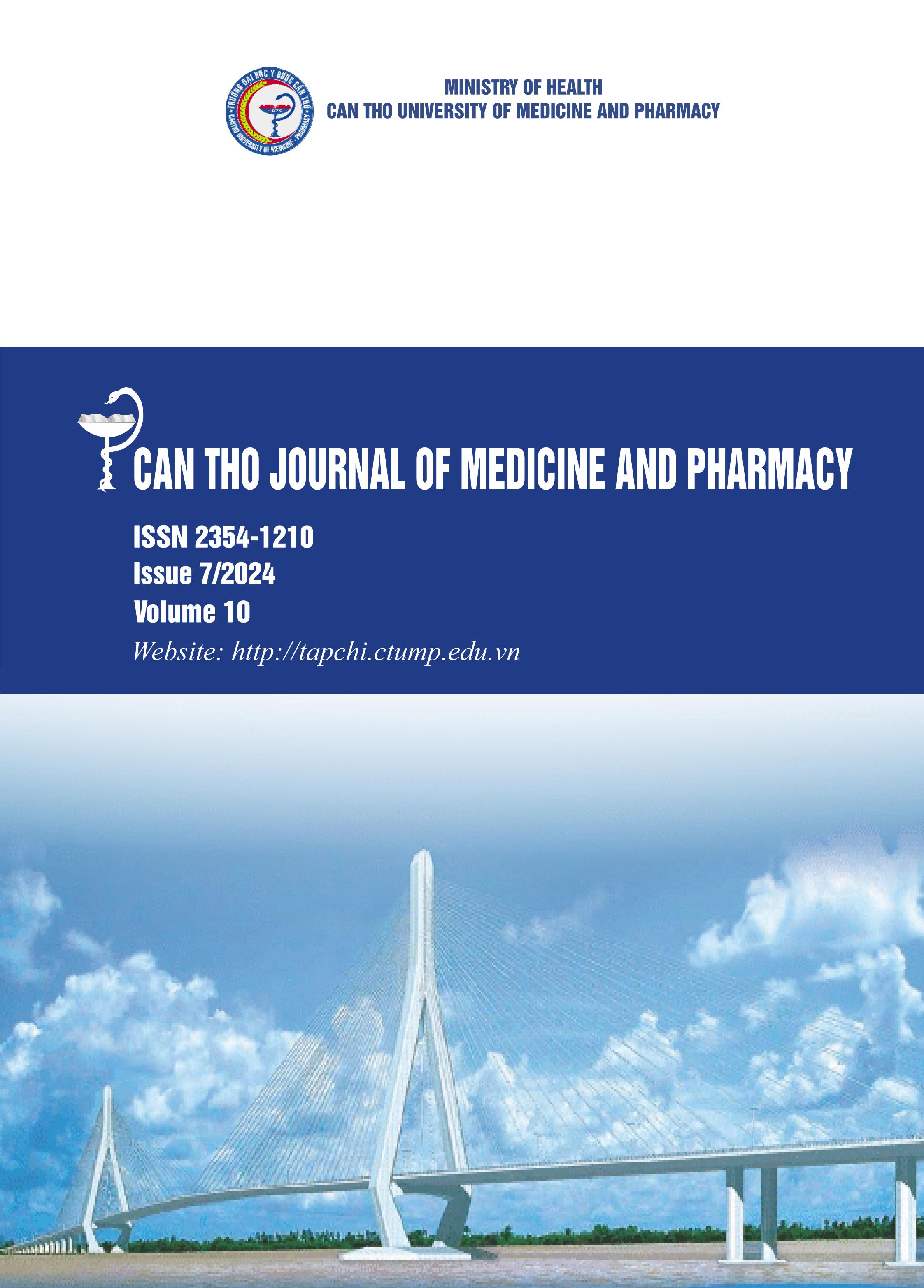STUDY ON THE ULTRASONOGRAPHIC AND RADIOGRAPHIC FINDINGS OF KNEE OSTEOARTHRITIS PATIENTS AT CAN THO UNIVERSITY OF MEDICINE AND PHARMACY HOSPITAL IN 2022-2023
Main Article Content
Abstract
Background: Knee osteoarthritis is a common disease in the group of bone and joint diseases. The incidence of the disease increases with age, commonly occurs in elderly patients or can also occur in young people. Diagnosis of knee osteoarthritis is mainly based on clinical symptoms combined with radiographs. Currently, ultrasound can be used to examine the damage that occurs in early-stage knee osteoarthritis. In addition, it has the ability to evaluate joint cartilage thickness, detect synovitis, joint effusion,... and abnormal features in other joint diseases of the knee, especially when there are no clinical manifestations or no damage on X-ray images. Objectives: To describe and compare ultrasonographic and radiographic findings in osteoarthritis-affected knee joints. Materials and Methods: A cross-sectional study was conducted on 50 patients and 62 knee joints diagnosed with osteoarthritis according to the American College of Rheumatology (ACR) 1991 criteria. General characteristics, radiographic findings, and ultrasonographic findings in osteoarthritis-affected knee joints of participants were collected at Can Tho University of Medicine and Pharmacy from May 2022 to April 2023. Results: Radiographs showed the most common finding was grade 1 osteophytes. The most common feature found on ultrasound was also grade 1 osteophytes. Medial condyle osteophytes and lateral condyle osteophytes: Grade 1 was the most common finding, with 53.2% and 58.1%. Medial tibial plateau osteophytes and lateral tibial plateau osteophytes: Grade 1 was the most common finding, with 54.8% and 50.0%. Medial compartment joint space narrowing: grade 1 was the most common (41.9%). Lateral compartment joint space narrowing was not found (grade 0) in 64.5%. In addition, ultrasound detected synovitis in patients with knee osteoarthritis, accounting for a fairly high rate of 87.1%. There was moderate agreement between osteophyte and joint space narrowing grading on ultrasound and radiographs. Conclusion: There was moderate agreement between osteophyte and joint space narrowing grading on ultrasound and radiographs. Ultrasound can also detect and evaluate synovitis that may not be seen on radiographs. We recommend using the ultrasonography atlas created for knee osteophyte detection in routine knee ultrasound.
Article Details
Keywords
ultrasound, radiographs, X-ray, knee osteoarthritis
References
2. Ho-Pham LT, Lai TQ, Mai LD, et al. (2014), Prevalence of Radiographic Osteoarthritis of the Knee and Its Relationship to Self-Reported Pain, PLoS ONE 9(4): e94563. DOI:10.1371/journal.pone.0094563.
3. Luu Thi Binh, Doan Anh Thang (2013), Validity of the ultrasound in knee osteoarthritis, Y hoc TP Ho Chi Minh, 17(3), pp. 340-345.
4. Altman RD (1991), Criteria for classification of clinical osteoarthritis, J Rheumatol, Suppl. 1991 Feb;27:10-2.
5. Altman RD (1991), Classification of disease: osteoarthritis, Semin Arthritis Rheum, 20(6 Suppl 2):40-7. DOI: 10.1016/0049-0172(91)90026-v.
6. Altman RD, Gold GE (2007), Atlas of individual radiographic features in osteoarthritis, revised, Osteoarthritis Cartilage, 15 Suppl A:A1-56. DOI: 10.1016/j.joca.2006.11.009.
7. Kellgren JH and Lawrence JS (1957), Radiological assessment of osteo-arthrosis, Ann Rheum Dis, 16(4), pp. 494-502. DOI: 10.1136/ard.16.4.494.
8. Koski JM, Kamel A, Waris P, et al. (2016), Atlas-based knee osteophyte assessment with ultrasonography and radiography: relationship to arthroscopic degeneration of articular cartilage, Scand J Rheumatol, 45(2):158-64. DOI: 10.3109/03009742.2015.1055797.
9. Saarakkla S, Waris P, Waris V, et al. (2012), Diagnostic performance of knee ultrasonography for detecting degenerative changes of articular cartilage, Osteoarthritis Cartilage, 20(5):376381. DOI: 10.1016/j.joca.2012.01.016.
10. Keen HI, Conaghan PG (2009), Usefulness of ultrasound in osteoarthritis, Rheum Dis Clin North Am, 35(3):503-19. DOI: 10.1016/j.rdc.2009.09.002.


